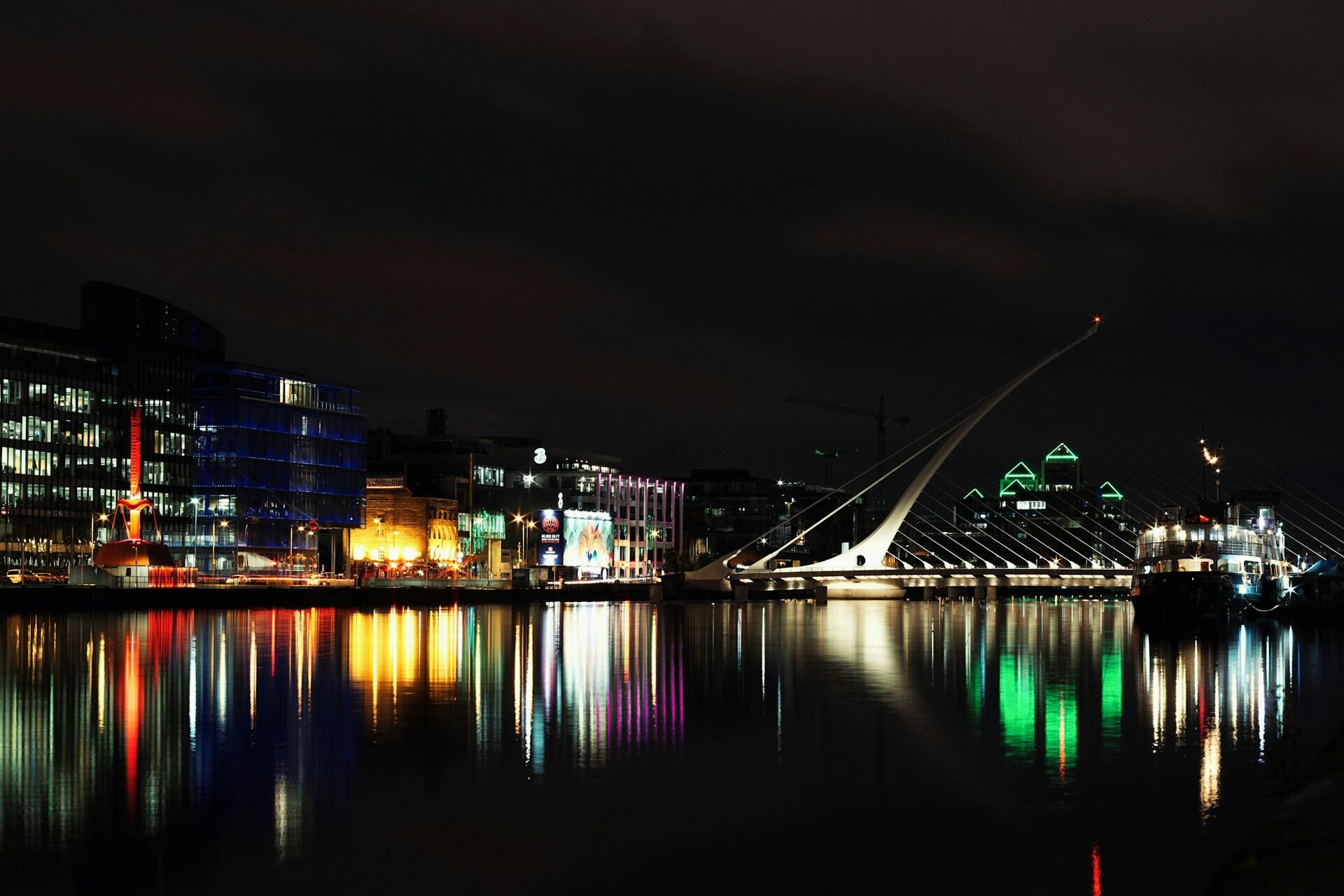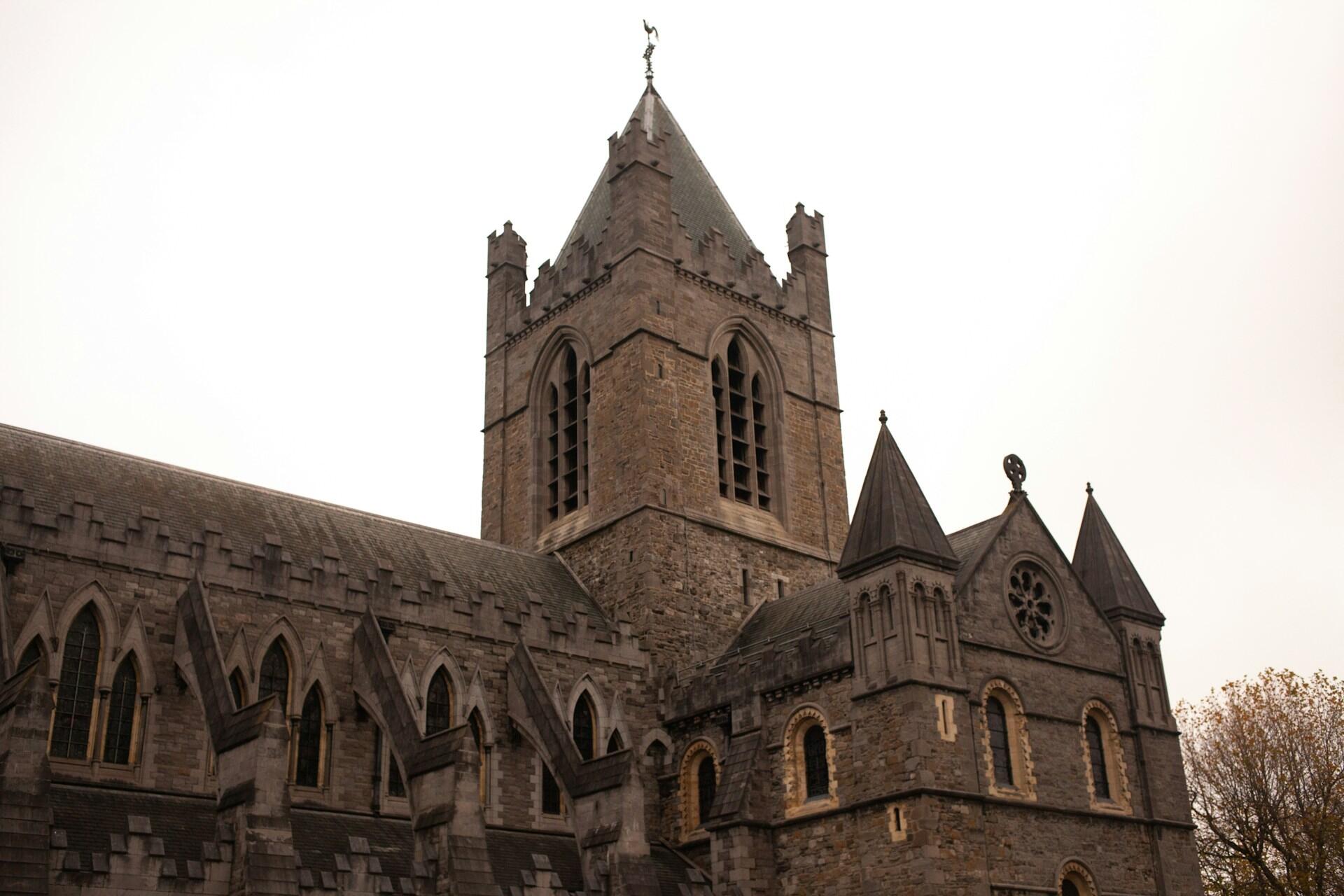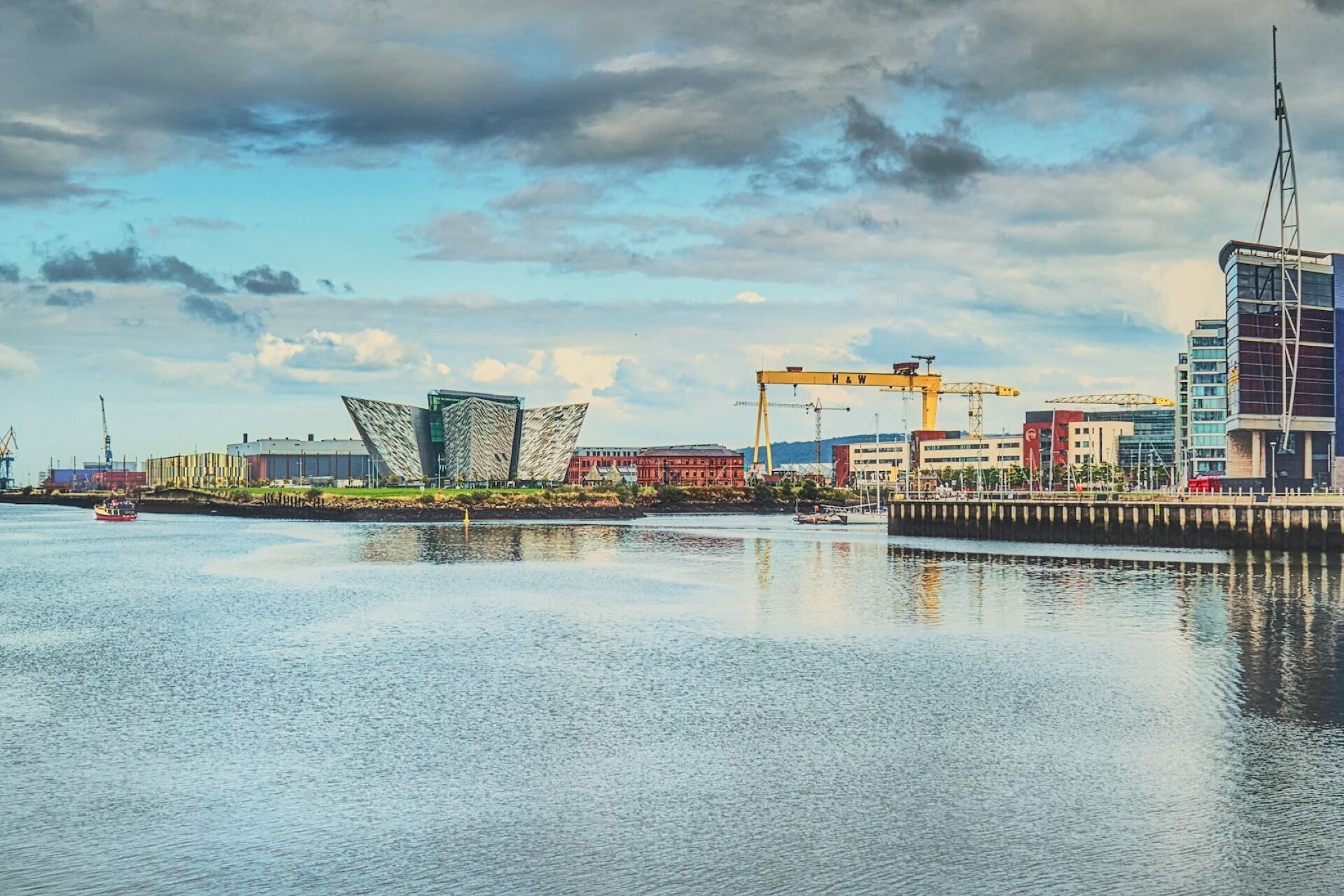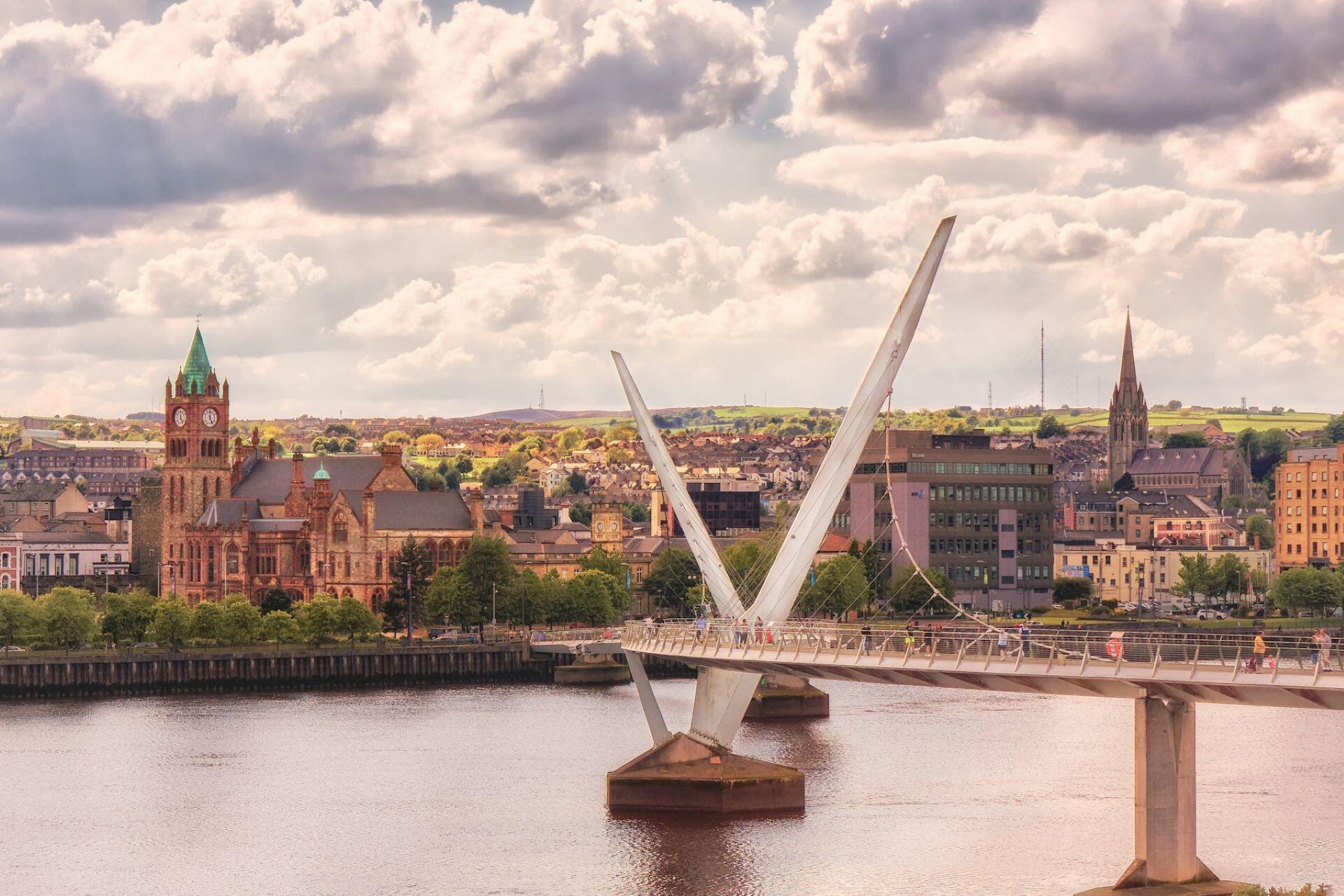Following centuries of political, religious, and social tension between Ireland and Britain, the Irish Free State and Northern Ireland formed two distinct political entities on the island. This came from the Anglo-Irish Treaty, which ended the Irish War of Independence. That's the concise and unsatisfying answer for why there's the Republic of Ireland and Northern Ireland. Still, there are far more causes and consequences than that. Here, we'll briefly introduce you to them, hoping you'll learn more about this important topic.

The Roots of Partition: A Very Short History of Irish-British Relations
The partition of Ireland didn't happen overnight. It was shaped by centuries of political struggles, religious divides, and economic exploitation.
The history of Ireland long predates where we're going to start and is even worth knowing to contextualise everything further. Still, we'll begin in the early 12th century, when Ireland was gradually brought under the control of the British Crown.
Tensions between the English rulers and the Irish population remained constant throughout the centuries that followed, and there were many uprisings and a long history of resistance from the Irish population.
Notable examples, which would all deserve their own articles, include:
To focus on the partition itself, let's focus particularly on the 19th century. By this time, nationalist movements in Ireland were gathering momentum. There were demands for self-rule and the repeal of the Act of Union.
The Road to Partition: The Government of Ireland Act and Rising Tensions
The Act of Union sought to incorporate Ireland into the United Kingdom, creating the United Kingdom of Great Britain and Ireland.
The Home Rule movement sought to give Ireland its own parliament while still under the British Crown. However, this faced fierce opposition in the north from certain Protestant communities who identified more with British identity and were concerned about being ruled by a Catholic-dominated Irish parliament in Dublin.

In 1914, the British Parliament passed the Third Home Rule Bill in another attempt to make Ireland less resistant to British rule. However, the outbreak of World War I left the bill largely unimplemented and nationalist groups like Sinn Féin, who advocated for complete independence, drawing upon Ireland's historic Celtic identity, grew in prominence.
The Easter Rising of 1916 galvanised support for republicanism. Though the Irish rebels were defeated by the British, the heavy-handed response by the British, including executions, only resulted in a more intensified call for complete Irish independence.
The British government passed the Government of Ireland Act of 1920 to resolve the crisis in Ireland and grant Home Rule with two parliaments: the Southern Parliament, which would become the Irish Free State, and the Northern Parliament, which later became Northern Ireland.
The act was an attempt to appease nationalists in the south and unionists in the north. Still, as we'll see, it only deepened and worsened divisions.
The Anglo-Irish treaty formalised the split, creating an independent Ireland in the south and continuing British rule in the north.

The Anglo-Irish Treaty and the Creation of Northern Ireland
The Anglo-Irish treaty is the official end of the Irish War of Independence. It was a crucial step in creating the Irish Free State. Still, it also made Northern Ireland a distinct political entity apart from it and brought it within the United Kingdom.
When the Irish delegation, led by Michael Collins and Arthur Griffith, negotiated the treaty's terms with the British government, it was seen as a defeat by many and a victory by others.
It granted the Irish Free State autonomy, including its own parliament, army, and government. Still, it left it within the British Commonwealth as a self-governing dominion like Canada or Australia.
The Irish Free State would eventually leave the Commonwealth and evolve into the fully independent Republic of Ireland without Northern Ireland.
Predominantly Catholic
Independent, but within the British Commonwealth
Anti-Treaty civil war followed
Political centre: Dublin
Predominantly Protestant
Remained part of the United Kingdom
Controlled by Unionists
Political centre: Belfast
The treaty enshrined the division of Ireland. Northern Ireland, comprising six counties in Ulster, was to remain part of the United Kingdom. This was driven by the Unionists, a predominantly Protestant group that was loyal to Britain and fearful of a Catholic-dominated Ireland in which they would form a religious minority.
Michael Collins and other Irish leaders saw the Anglo-Irish treaty as a pragmatic step towards complete independence, but anti-treaty Republicans rejected it. They were unhappy with the oath of allegiance to the British Crown, which they felt betrayed everyone who'd fought for a fully independent Irish republic.

The Religious and Political Landscape: Catholic Ireland vs Protestant Ulster
The religious landscape of Ireland was one of the key factors in the treaty's division of it.
While the population of Ireland was predominantly Catholic, with a significant minority of Protestants in the north, the blending of religious and political ideals fuelled tensions between Catholic nationalists and Protestant unionists, adding to tensions that been going since long before the Great Famine.
Catholic nationalists in the south sought to break free from British rule and establish an Irish republic. The Irish Free State that resulted from the Anglo-Irish Treaty was overwhelmingly Catholic, and the new state became a symbol of Catholic nationalism.
The Unionists in Northern Ireland, mainly Protestant, had concerns about being ruled by Catholics. After all, the United Kingdom was primarily Protestant and Protestant Unionists in the Ulster region had a stronger allegiance to the British Crown.
These religious and political divides wouldn't disappear with the Anglo-Irish Treaty, and throughout the 20th century, sectarian and political divisions became a permanent feature of the landscape.
The partition of Ireland wasn’t purely religious. It was also about land ownership, political allegiance, and economic control, especially in industrialised Ulster.
The Economic and Social Impact of Partition
The partition greatly impacted both the Irish Free State (later the Republic of Ireland) and Northern Ireland.
Both had separate economies, policies, and societal structures, which would set them on different paths, particularly economically, for years to come.
The newly established Irish Free State faced numerous challenges. For one, it was an independent nation and no longer a British colony.
The Irish War of Independence and the Civil War made economic stability very difficult, and the Irish economy, which was predominantly agricultural, suffered greatly.
Dublin became the political and cultural capital of the new state while the rest of the country struggled with poverty, underdevelopment, and high levels of emigration.
Northern Ireland remained economically tied to Britain and the UK and was an important industrial hub. The new capital, Belfast, was focused on shipbuilding, linen production, and engineering.

However, now that Northern Ireland was controlled by the Protestant-majority Unionists, the inequality between Protestants and Catholics became more marked. Catholics in Northern Ireland were subject to discrimination in employment, housing, and political representation, as well as social and economic exclusion, and these issues only contributed to future conflicts.
Over time, the differences between these two parts of Ireland became increasingly evident. The south sought a more self-sufficient economy with protectionism and independence from British influence. At the same time, the north remained tightly linked to Britain with trade agreements, British investment, and a more significant industrial base.
Political identities also moved apart, with Catholic nationalism evident in the south and a greater British identity expressed by Protestant Unionists in the north.
The Lasting Effects of Partition
The Troubles: How Partition Led to Decades of Conflict
The partition of Ireland in 1921 set both entities and diverging paths that would culminate in decades of conflict.
This violent period of conflict, particularly between the 1960s and 1990s, was known as The Troubles. The conflict was rooted in the sectarian and political divide between Protestants and Catholics in the North, as well as the political identities of Irish nationalism and Ulster Unionism.
Ireland had been a Christian country since St. Patrick legendarily drove out paganism, but the Catholic nationalist community in Northern Ireland had long been excluded from political power and, by the 1960s, began demanding greater civil rights and equality.
Peaceful protests turned into violent confrontations, particularly when the Royal Ulster Constabulary (RUC) heavily responded. The Provisional IRA, a more radical faction of the Irish Republican Army, took up arms to end British rule and reunify Ireland.
Paramilitary groups like the Ulster Volunteer Force (UVF) and the Ulster Defence Association (UDA) were formed, and places like Belfast and Derry became centres for violence with bombings, shootings, and sectarian attacks.
British efforts to maintain order often resulted in exacerbating tensions, particularly after major incidents like Bloody Sunday in 1972, when British soldiers shot 14 unarmed Catholic protestors in Derry.

The Troubles resulted in thousands of deaths and many injuries. Violence, political repression, and segregation reinforced separate identities within communities with the long-lasting legacy of sectarian violence polarising society.
The Good Friday Agreement of 1998 established a devolved government. While the wounds were far from healed and divisions still felt by some, the stage was set for power-sharing between Unionists and Nationalists.
1920
Government of Ireland Act
1921
Anglo-Irish Treaty signed
1922
Irish Free State established
1949
Republic of Ireland declared
1998
Good Friday Agreement signed
















A very one sided view of what the British rule did in the splitting of the Irish island.
No conversation about the IRA or the paramilitary Irish forces. Also 12 people is not a massacre? Please ready further into this history and look deeper, also rewrite something a bit more accurate. Thanks
One sided view? No mention of paramilitary or IRA involvement. Obviously you are not aware of the fact that the country was partitioned by the British BEFORE either IRA or paramilitary activity came about.
The IRA and it’s political wing Sinn Fein only became active AFTER and as a result of the partition. The one sided treatment of Catholics in that partition angered Catholics (No right to vote, the major employers in Belfast encouraged NOT to employ Catholics i.e., Harland & Wolfe ) .
The “Troubles” were initially to get the Right to be treated equally to the Protestant population. Sane right to vote, equal rights to employment and education. The same rights as Protestants to March for their rights. When these matches (civil rights matches) took place they were met with extreme violence and the MURDER of the occupying British Army. THEN the paramilitaries and IRA became active . This is the truth if the matter. The full story.
Hi Peter.
Thank you for your comment. You’ve raised an important historical point — the Plantation of Ulster was indeed a foundational event that contributed to the divisions that later emerged more formally. In this blog post, we chose to start from 1801 for brevity, but we appreciate your reminder that any serious discussion of Ireland’s division must acknowledge earlier periods of colonisation and conflict. We’ll work on expanding the historical context in future revisions.
The account as I understand it!
Hi Ant.
Thank you for your thoughtful feedback. We appreciate you highlighting that British rule and the history of paramilitary groups like the IRA are complex and deserve balanced coverage. You’re right that the events surrounding the Troubles, including tragic events like Bloody Sunday, involved loss on all sides and require sensitive and accurate treatment. We will review the content with your comments in mind to ensure we are presenting a more complete and nuanced view of Ireland’s history. Thank you again for encouraging a deeper conversation.
You conveniently started in year 1801 to explain ‘Why Is Ireland Split in Two?’. The real reason ireland is split in two is because of the notorious and malicious ‘Plantation of Ulster’ starting in AD1606, which was clearly British colonisation of the Irish people and Irish lands.
Hi Melvin.
Thank you for your comment and for raising an important point. You’re absolutely right that the Plantation of Ulster in the early 1600s was a critical moment in Irish history and a major factor in the long-term division between communities in Ireland. In the blog, we chose to focus from 1801 onwards to keep the article concise and accessible, but we completely agree that a full understanding of Ireland’s division requires looking back to earlier events like the Plantations. We’ll take your feedback into account for future updates to ensure we offer a fuller picture.